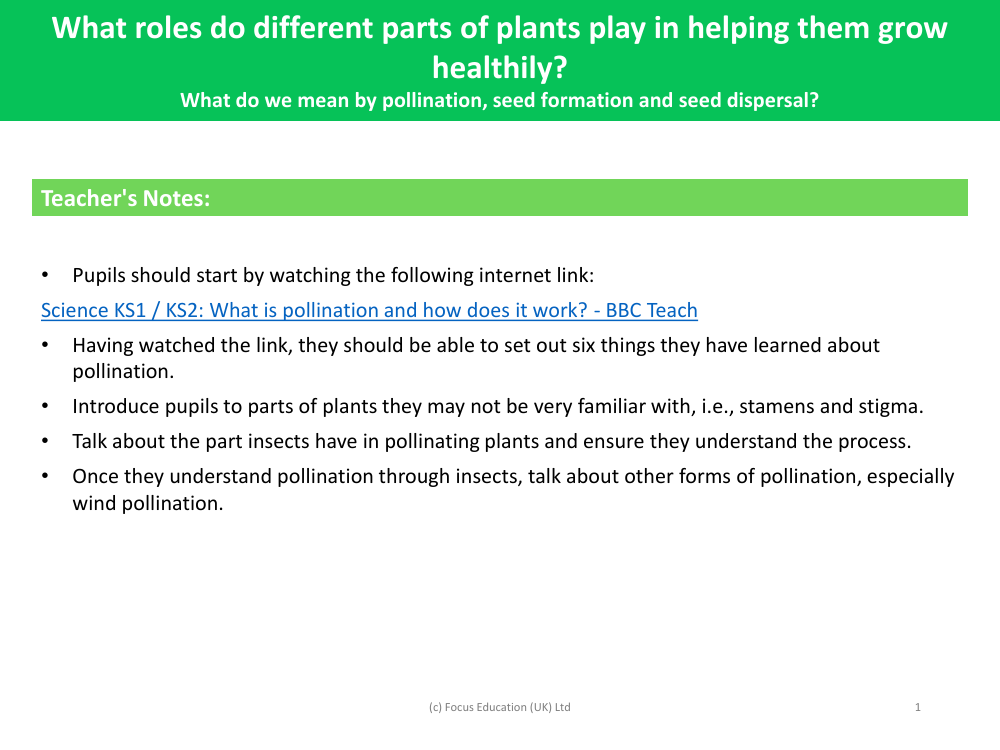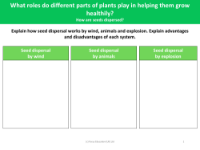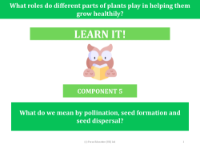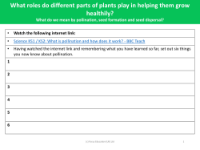What do we mean by pollination, seed formation and seed dispersal? - teacher's notes

Science Resource Description
Pollination, seed formation, and seed dispersal are crucial processes in the life cycle of flowering plants. Pollination refers to the transfer of pollen from the male part of a flower, called the stamen, to the female part, known as the stigma. This can occur through various means, including insects and wind. Insects, such as bees, often play a vital role in pollination by transferring pollen as they move from flower to flower in search of nectar. Wind pollination, on the other hand, occurs when pollen is carried through the air from one plant to another, which is common in grasses and trees.
Once pollination has taken place, seed formation begins. This is the process where the fertilised ovule within the flower develops into a seed, containing the genetic blueprint for a new plant. The final stage is seed dispersal, which is the method by which seeds are spread away from the parent plant to reduce competition for resources. Seeds can be dispersed in a multitude of ways, including by wind, water, animals, and even explosive mechanisms within the plant itself. Each of these processes plays a vital role in the reproductive cycle of plants, ensuring the survival and proliferation of plant species across diverse ecosystems.




